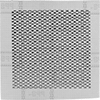Filter by
Container Type
For Use On
For Joining
Container Size
Formulation
Begins to Harden
Reaches Full Strength
Maximum Temperature
Manufacturer
Clarity
For Use With
DFARS Specialty Metals
Minimum Temperature
Minimum Application Temperature
All Results
Facility and Grounds Maintenance

Concrete Curing Vibrators
Increase the strength of concrete mix by shaking trapped air loose
1 product
Sealing
Fastening and Joining
Fabricating and Machining
Containers, Storage, and Furniture
Electrical































































